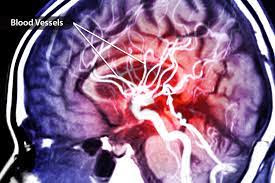If you haven't been under the proverbial rock, you have some idea of what global warming is. First, some background dummied down for the population--of which I was one.
Burning fossil fuels like coal and oil puts more and more carbon dioxide into the air. Too much of these greenhouse gases can cause Earth's atmosphere to trap more heat because the abundance of gases can't dissipate anymore and go back to the atmosphere.
Here's an example. Carbon dioxide up to the second Industrial Revolution in the mid 1800s was about 280 parts per million. As of 2018, the CO2 in the atmosphere was 407.4 ppm. And that's how bad the global warming is, and it will go up if we don't change our daily routine.
There was talk in the 1990s about car-pooling so there wouldn't be so many cars on the road, but Americans (of which I am one) need the freedom to go wherever they want and when they want as I did, too, before the stroke so most of them drive their own damn cars. There was also talk of solar and wind power. But much of that talk has died down.
So we only have to blame ourselves because humans have been rapidly changing the balance of gases in the atmosphere. So where does stroke come into the picture?
1. In one study from 2016, which used data from the United States and China because those two countries emit the most greenhouse gases, is one of the first to examine the interaction between air quality and the number of stroke cases.
Led by Longjian Liu, M.D., Ph.D., lead study author and an associate professor of epidemiology and biostatistics at Drexel University, across the two countries, researchers found that the total number of stroke cases rose 1.19 percent for each 10 micrograms per cubic meter of air increase of PM2.5 and also found that temperature had an impact on air quality and risk of stroke.
Thus, people living in the South of the United States had the highest prevalence of stroke at 4.2 percent compared with those in the West who had the lowest at 3 percent, Liu said.
Researchers also found that temperature had an impact on air quality and risk of stroke.
"Seasonal variations in air quality can be partly attributable to the climate changes," Liu said. "In the summer, there are lots of rainy and windy days, which can help disperse air pollution. High temperatures create a critical thermal stress that may lead to an increased risk for stroke and other heat- and air quality-related illnesses and deaths."
2. In a more recent study by Dr. Guoxing Li et al focused on YLL (years of life lost) and found that models used indicated projections to estimate temperature-related YLL in the 2050s and 2070s the monthly analysis to be a significant increase occurred in the summer months, particularly in August, with percent changes >150% in the 2050s and up to 300% in the 2070s.
So future changes, beginning right now, in climate are likely to lead to an increase in heat-related YLL.
3. And from 2021 comes this: Dawn O. Kleindorfer et al, in a study which focused on lifestyle factors, such as a healthy diet and physical activity, are key for preventing a second stroke. [A second stroke. I can't even imagine.]

















